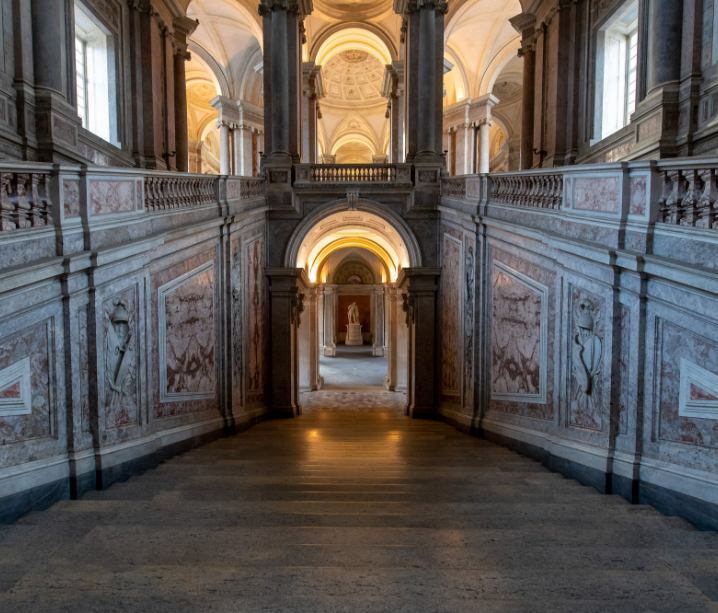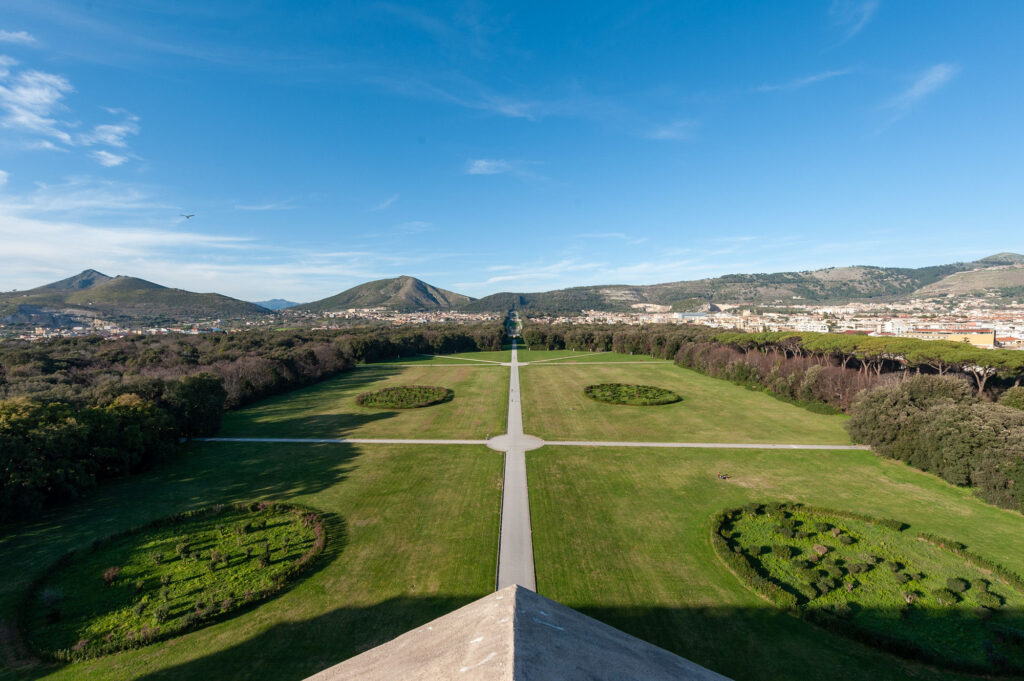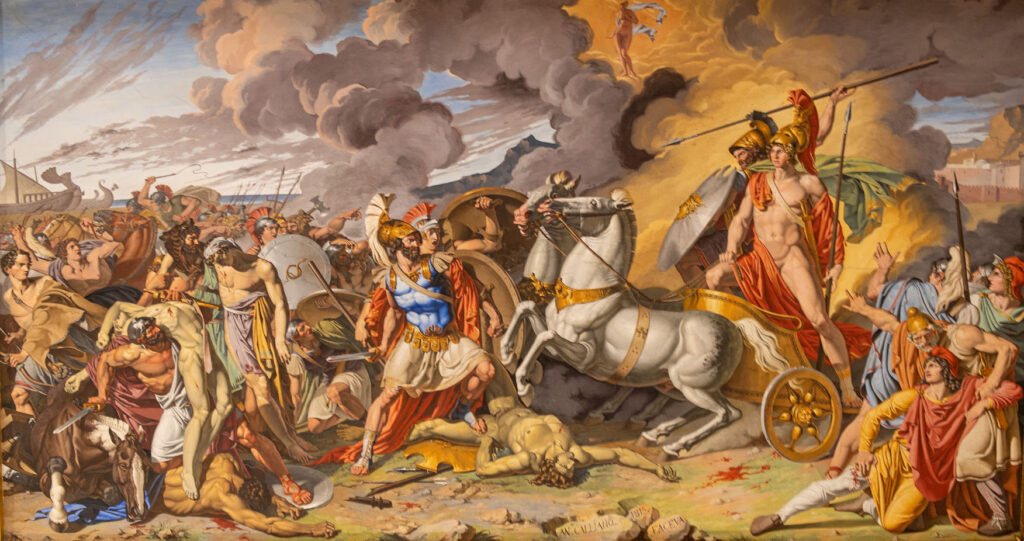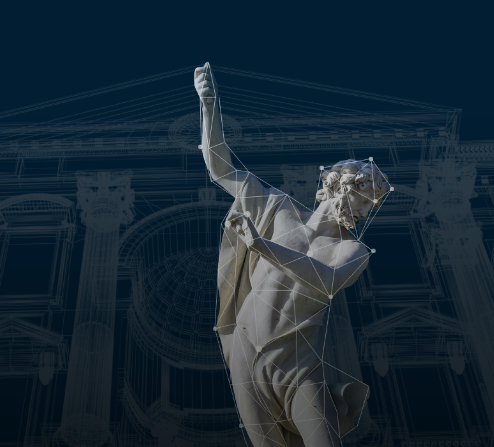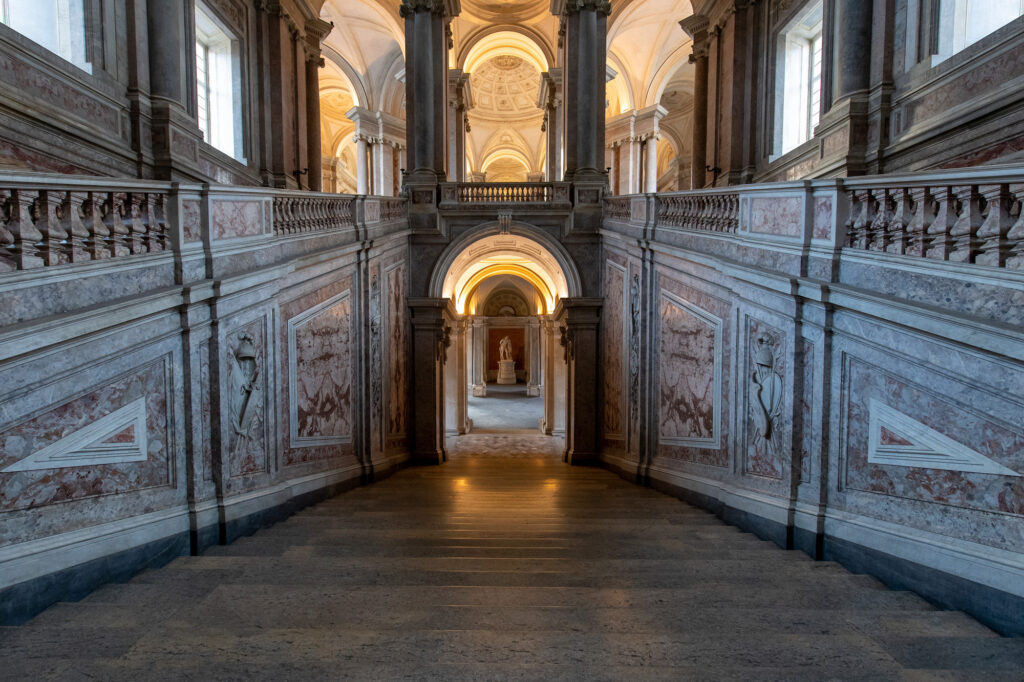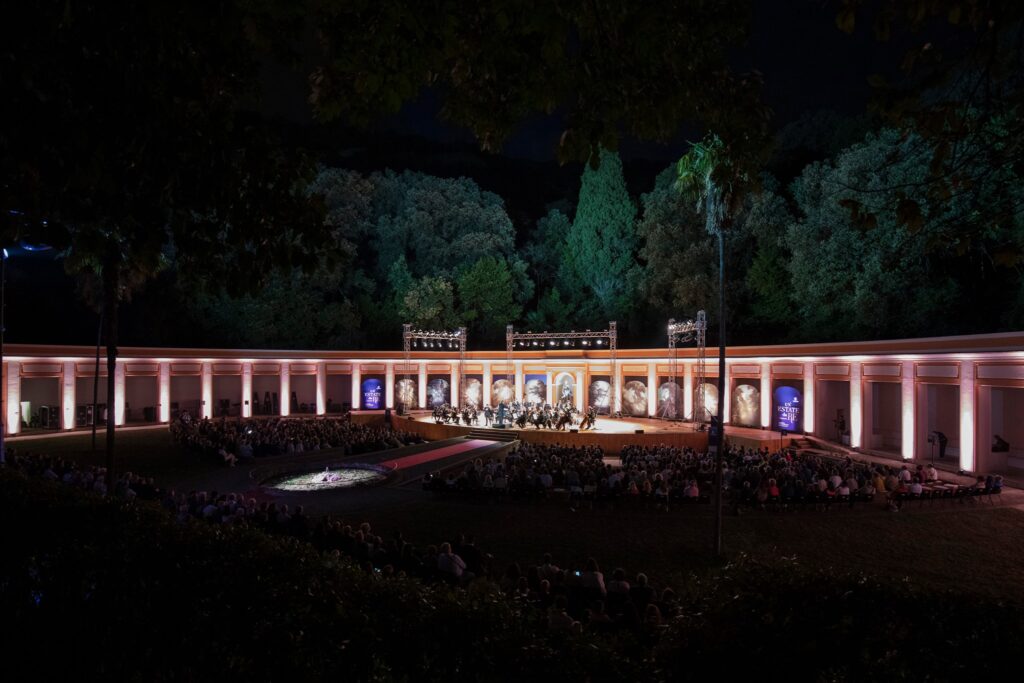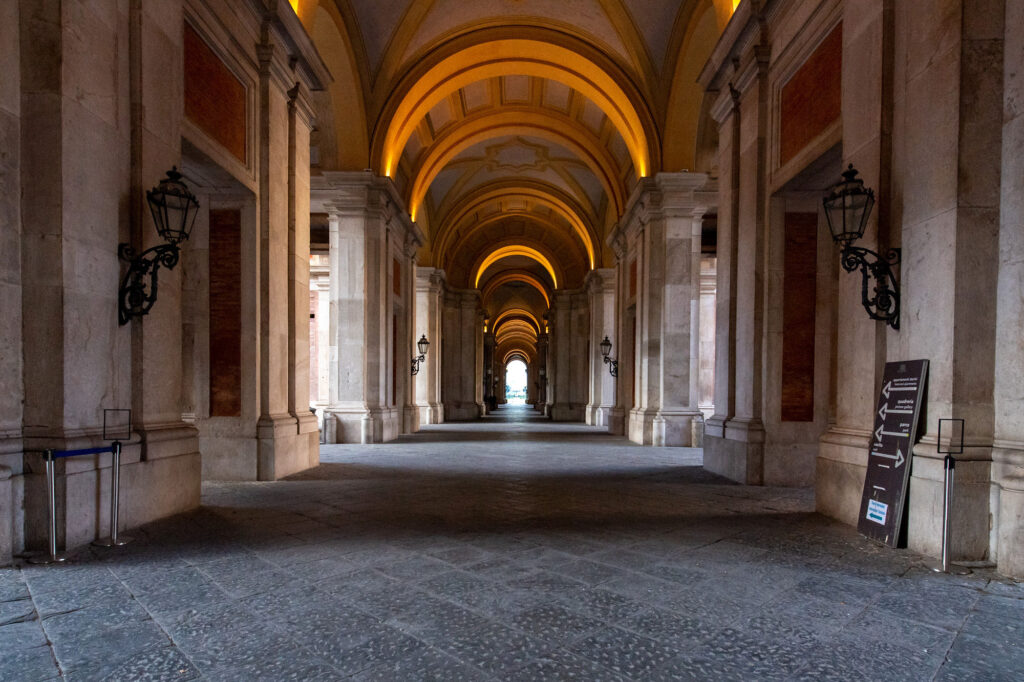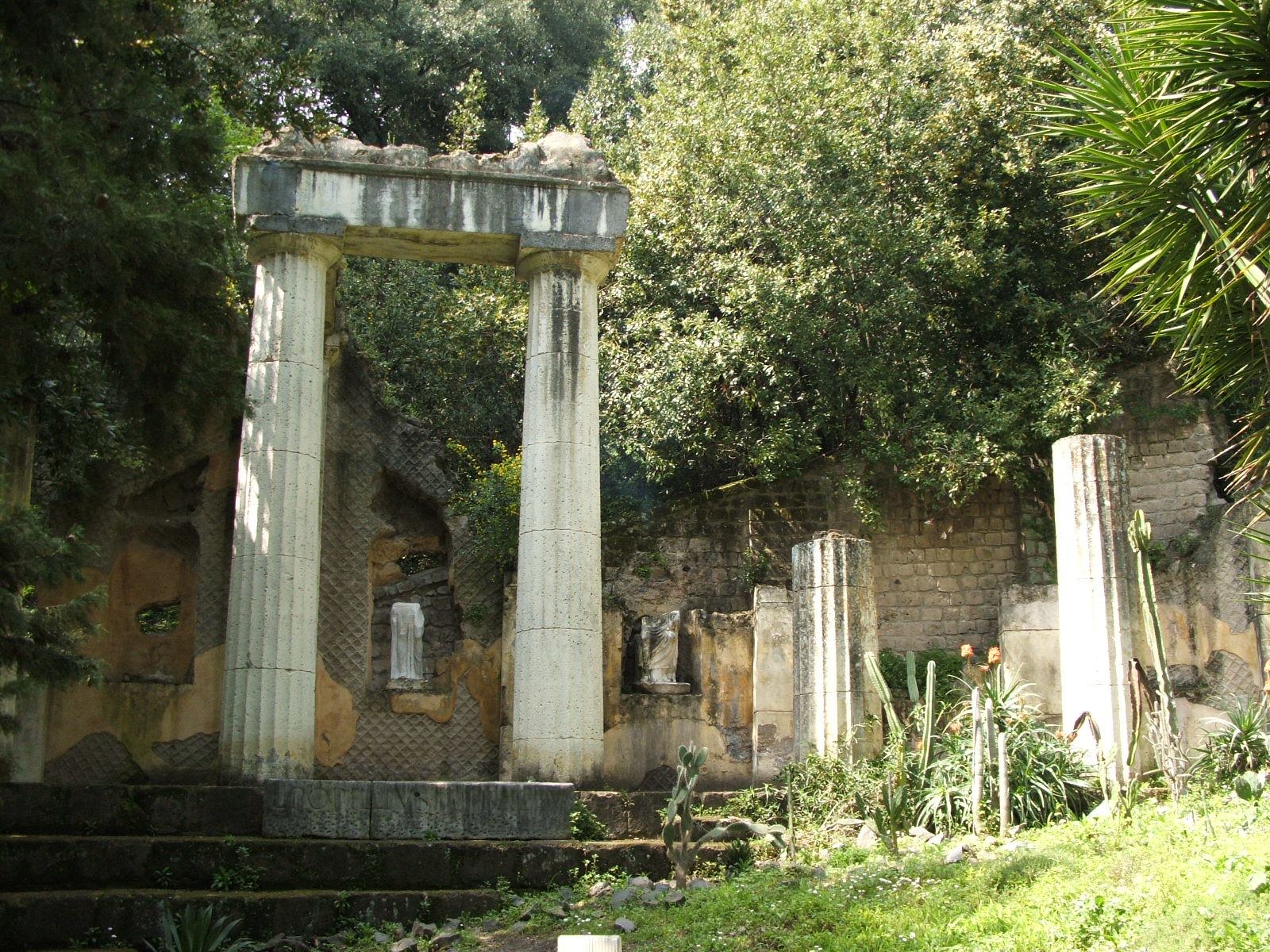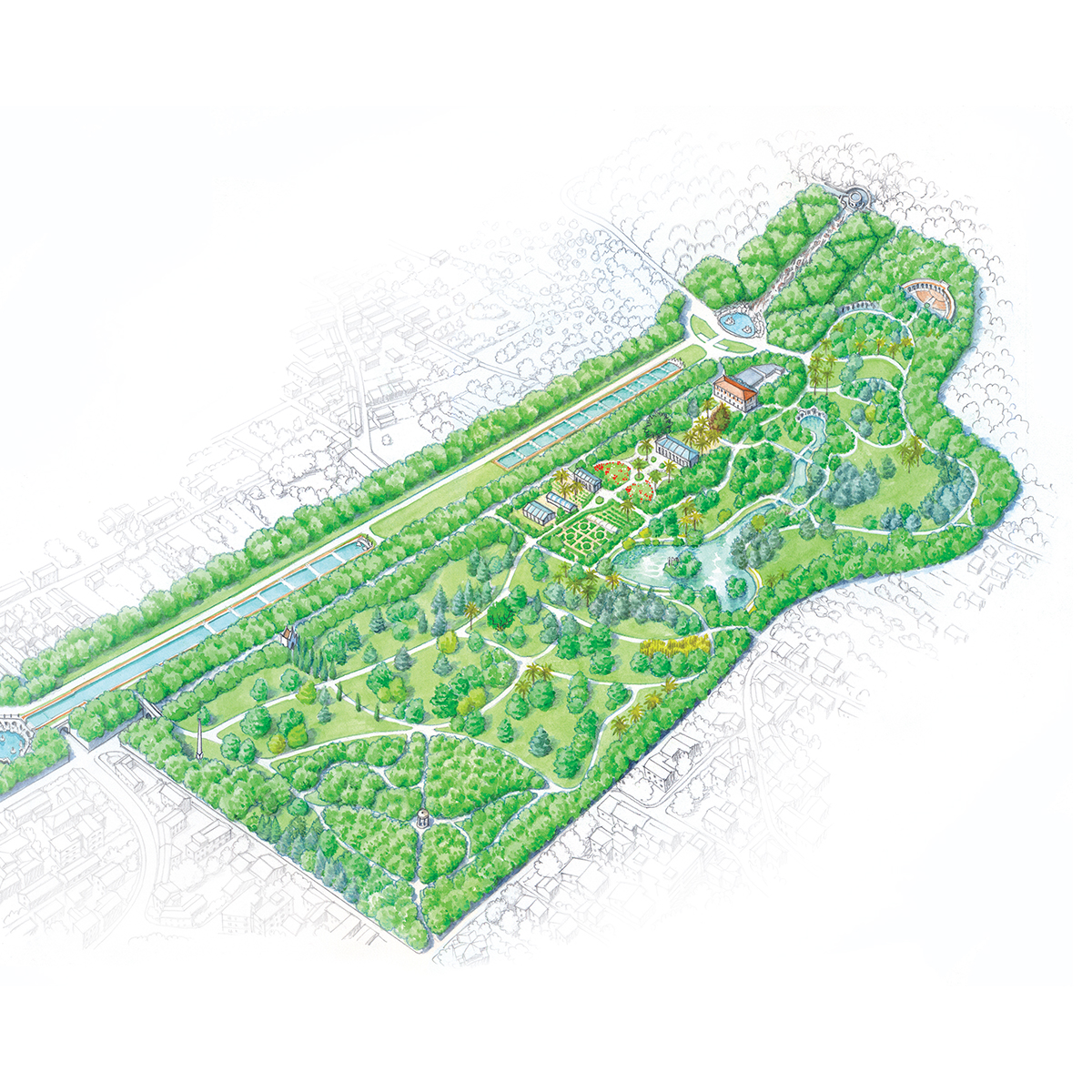A romantic evocation of the past
Temple recall the eighteenth-century enthusiasm for the discovery of Herculaneum and Pompeii. Built between 1830 and 1831, when the Royal Botanical Garden of Caserta was managed by Geremia Ascione, these reproduction archaeological remains are inspired by the Doric temples of Paestum. In a romantic setting, the nineteenth-century architectures haunch two ancient bas-reliefs. The first represents a trophy of arms, the second three male togate figures: both pieces come from Ancient Capua.
See the map

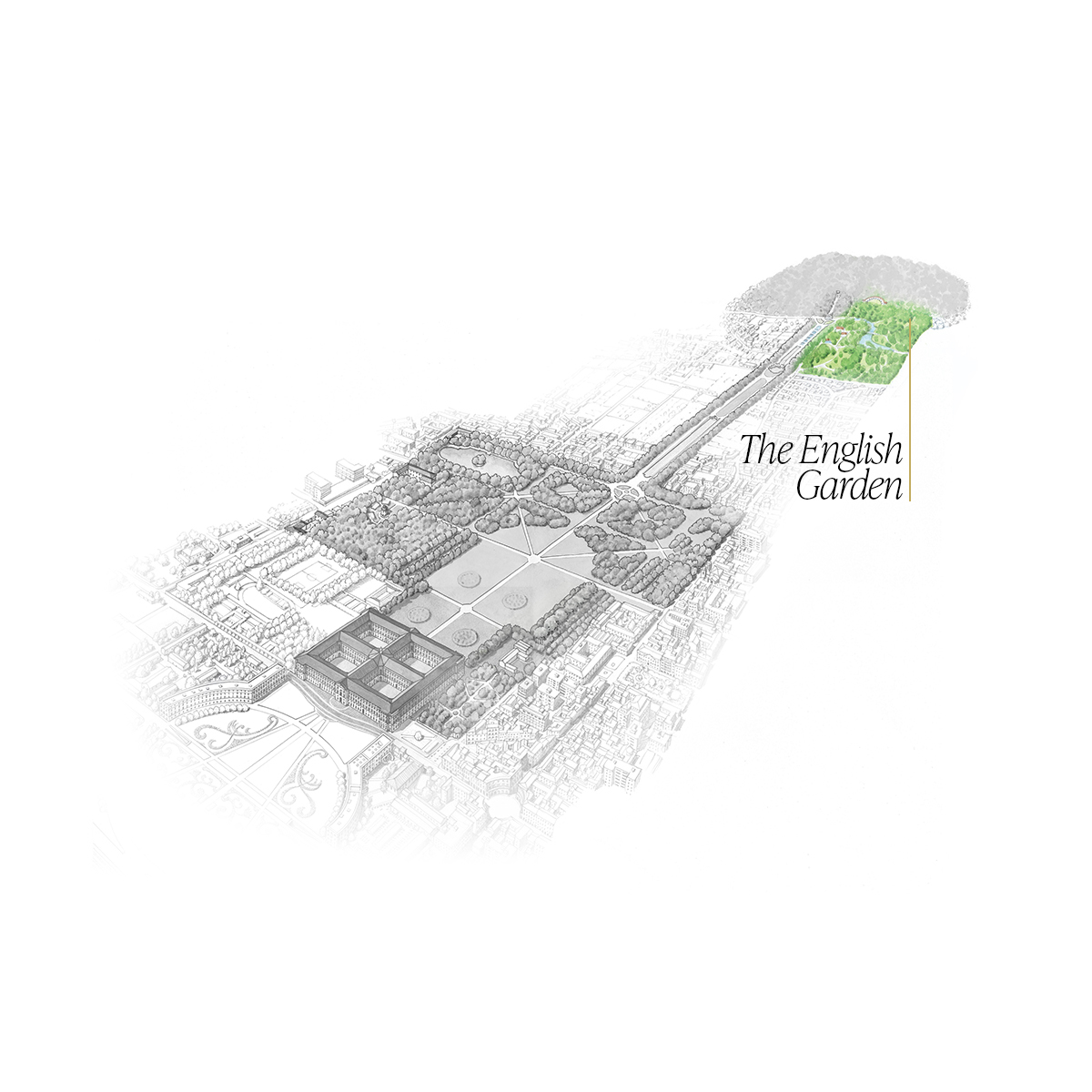

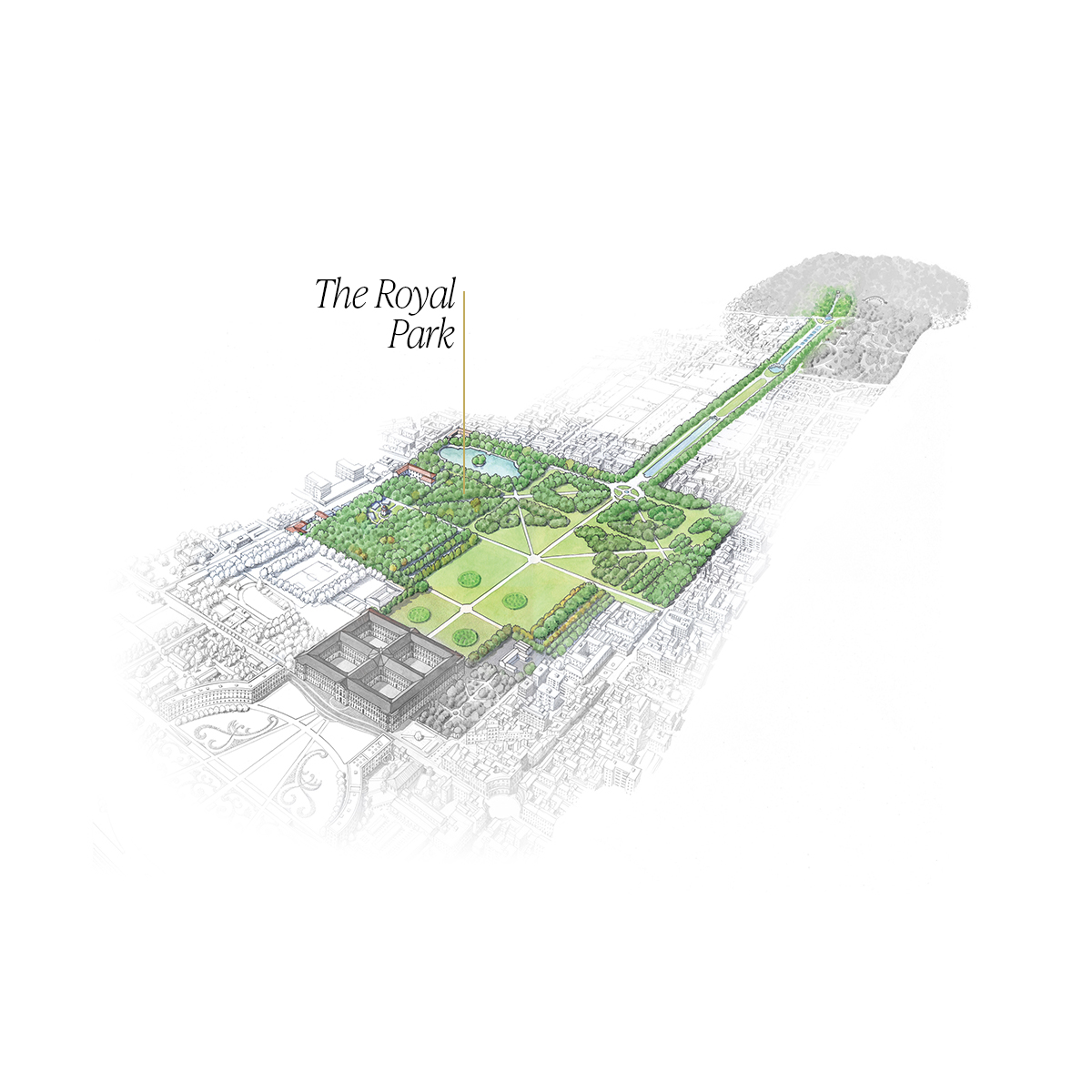
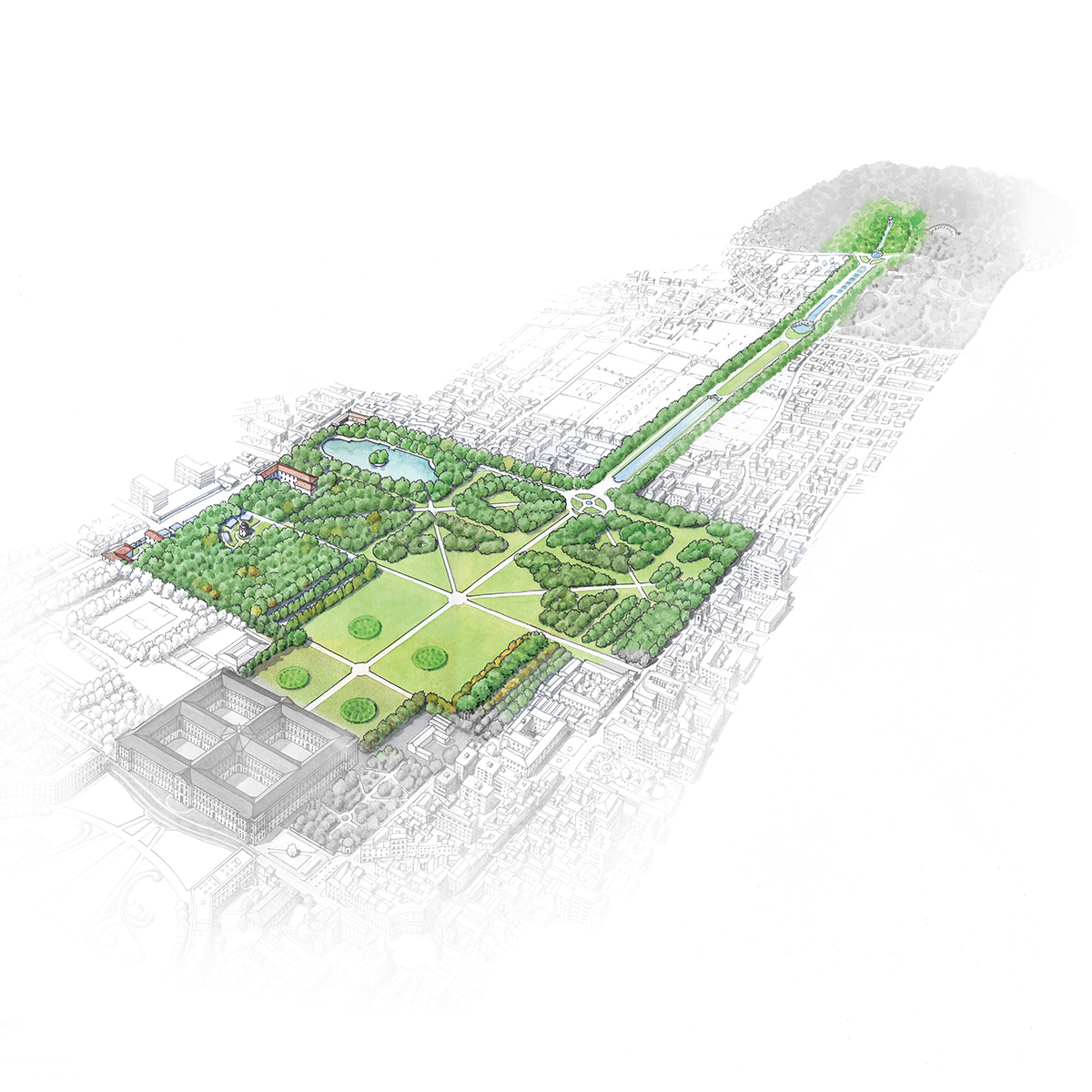
 Via d'acqua
Via d'acqua Castelluccia
Castelluccia Peschiera
Peschiera The Fountain of Dolphins
The Fountain of Dolphins The Fountain of Aeolus
The Fountain of Aeolus The Fountain of Ceres
The Fountain of Ceres The Fountain of Diana and Actaeon
The Fountain of Diana and Actaeon The Fountain of Venus and Adonis
The Fountain of Venus and Adonis The waterfall and Torrione
The waterfall and Torrione The Bosco Vecchio (Old Wood)
The Bosco Vecchio (Old Wood) The Margherita Fountain
The Margherita Fountain







1
 Via d'acqua
Via d'acqua2
 Castelluccia
Castelluccia3
 Peschiera
Peschiera4
 The Fountain of Dolphins
The Fountain of Dolphins5
 The Fountain of Aeolus
The Fountain of Aeolus6
 The Fountain of Ceres
The Fountain of Ceres7
 The Fountain of Diana and Actaeon
The Fountain of Diana and Actaeon8
 The Fountain of Venus and Adonis
The Fountain of Venus and Adonis9
 The waterfall and Torrione
The waterfall and Torrione10
 The Bosco Vecchio (Old Wood)
The Bosco Vecchio (Old Wood)11
 The Margherita Fountain
The Margherita Fountain
Beyond the Royal Palace

1. Via d'acqua2. Castelluccia3. Peschiera4. The Fountain of Dolphins5. The Fountain of Aeolus6. The Fountain of Ceres7. The Fountain of Diana and Actaeon8. The Fountain of Venus and Adonis9. The waterfall and Torrione10. The Bosco Vecchio (Old Wood)11. The Margherita Fountain

Beyond the Royal Palace




